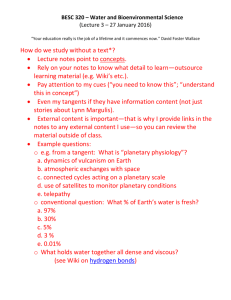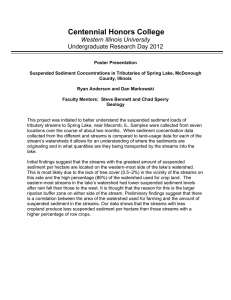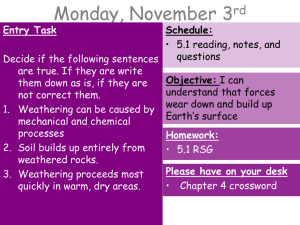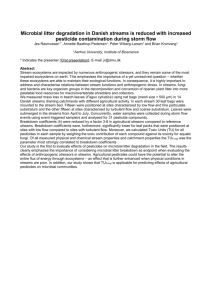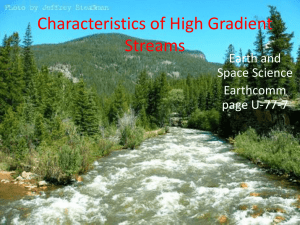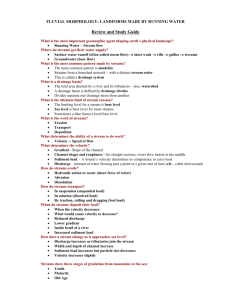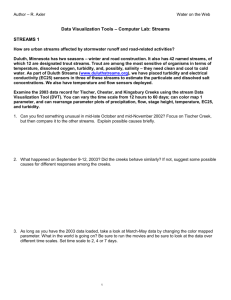Low Gradient Streams
advertisement
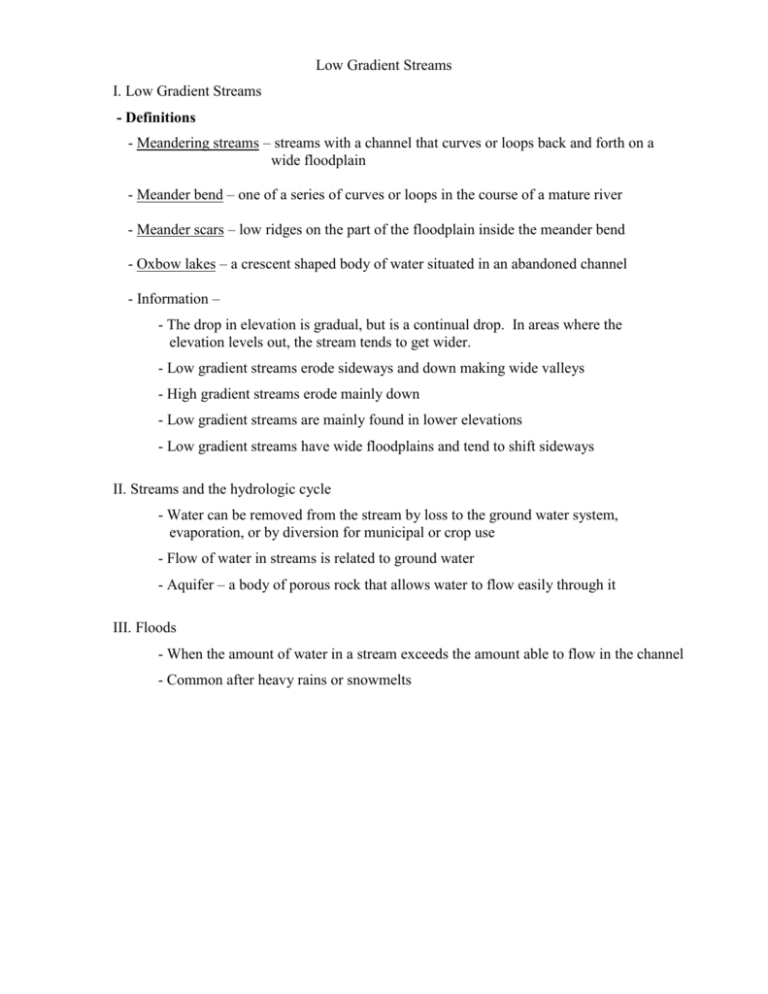
Low Gradient Streams I. Low Gradient Streams - Definitions - Meandering streams – streams with a channel that curves or loops back and forth on a wide floodplain - Meander bend – one of a series of curves or loops in the course of a mature river - Meander scars – low ridges on the part of the floodplain inside the meander bend - Oxbow lakes – a crescent shaped body of water situated in an abandoned channel - Information – - The drop in elevation is gradual, but is a continual drop. In areas where the elevation levels out, the stream tends to get wider. - Low gradient streams erode sideways and down making wide valleys - High gradient streams erode mainly down - Low gradient streams are mainly found in lower elevations - Low gradient streams have wide floodplains and tend to shift sideways II. Streams and the hydrologic cycle - Water can be removed from the stream by loss to the ground water system, evaporation, or by diversion for municipal or crop use - Flow of water in streams is related to ground water - Aquifer – a body of porous rock that allows water to flow easily through it III. Floods - When the amount of water in a stream exceeds the amount able to flow in the channel - Common after heavy rains or snowmelts Sediments in Streams (Earthcomm U:95-98) - There is a wide range of sediment sizes Gravel (pieces of rock) Mud Sediment Classification Particle Size Boulders > 256 mm Cobbles 256 mm – 64 mm Sand 2 mm - 0.062 mm Pebbles Silt Clay 64 mm – 2 mm 0.062 mm – 0.0039 mm < 0.0039 mm Transportation of Sediments - Sediments can be dissolved in the water - Sediments can be moved along with the water but not dissolved IF - The particles are suspended in the water and are the materials carried along by the water above the stream bed, they are categorized as the suspended load. - The particles are larger and travel along the stream bead by sliding, rolling, etc, they are categorized as the bed load. - It all depends on the particle size and water speed. - Faster water can suspend and move bigger particles. Reducing Sediment Size - As the sediment moves downstream, the particle physically make contact and are rounded, by chipping, and ground down as they hit and roll over each other. - As harder small materials, such as sand, scour over the stationary bigger sediment the bigger pieces can get worn down and rounded. - Downstream fining – particles moved by rivers get smaller the farther downstream you get. This is due to slower water speed and the breakdown of larger particles.
